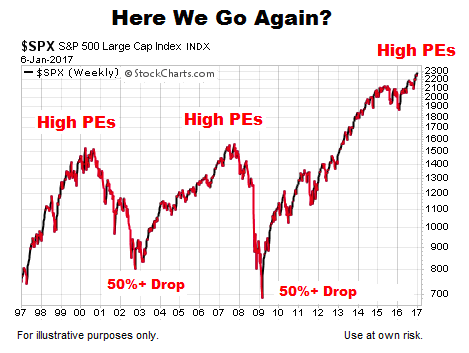US Tariffs Drive China's LPG Imports Towards The Middle East

Table of Contents
The Impact of US Tariffs on China's LPG Market
The trade war between the US and China, initiated in 2018, saw both countries impose significant tariffs on each other's goods. These retaliatory tariffs dramatically impacted numerous sectors, including the LPG market. While not initially targeted at energy, the resulting trade tensions significantly increased the cost of US LPG imports for China. This increase in cost stemmed from both the direct tariffs levied on the LPG itself and indirect costs associated with navigating the complex and increasingly expensive trade environment.
- Increased import costs from the US: Tariffs added a substantial premium to the price of US LPG, making it less competitive in the Chinese market.
- Reduced competitiveness of US LPG compared to other suppliers: The added costs made US LPG significantly less attractive compared to LPG from alternative sources, particularly from the Middle East.
- Shift in Chinese energy policy to diversify import sources: Facing higher prices and supply chain uncertainties, China accelerated its efforts to diversify its LPG import sources, reducing its dependence on a single supplier.
The Rise of Middle Eastern LPG Suppliers
The Middle East, with its vast LPG reserves and geographically advantageous location, quickly filled the void left by the decline in US LPG imports. Countries like Saudi Arabia, Qatar, and the United Arab Emirates (UAE) emerged as key beneficiaries, significantly increasing their LPG exports to China. Their proximity to China resulted in lower shipping costs, a crucial factor in price competitiveness.
- Lower transportation costs from Middle Eastern countries: Reduced shipping distances and times translate directly into lower costs for Chinese importers.
- Increased investment in LPG infrastructure in the Middle East: Recognizing the increased demand from China, Middle Eastern countries invested heavily in upgrading their LPG production and export infrastructure.
- Strategic partnerships between Chinese and Middle Eastern energy companies: The shift in trade flows was also facilitated by strategic partnerships and joint ventures between energy companies from both regions, further solidifying the Middle East's position as a major LPG supplier to China.
Economic and Geopolitical Implications
The redirection of China's LPG imports has profound economic and geopolitical consequences. For China, reduced reliance on a single source enhances its energy security. However, the US faces lost export revenue and a weakening of its position in the global LPG market. The shift also alters the geopolitical dynamics in the region.
- Impact on China's energy security: Diversification reduces vulnerability to supply disruptions from a single source, improving China's energy security.
- Changes in US-China trade relations: The LPG trade dynamic adds another layer of complexity to already strained US-China trade relations.
- Implications for regional stability in the Middle East: Increased trade ties between China and Middle Eastern countries could contribute to regional stability, albeit with potential complications arising from evolving power dynamics.
Future Trends and Predictions for China's LPG Imports
Looking ahead, the trend of increased LPG imports from the Middle East to China is likely to continue. China's growing energy demand, coupled with its commitment to energy security, will drive further diversification of its import sources, but the Middle East is poised to remain a significant player.
- Continued growth in China's LPG demand: China's expanding petrochemical industry and increasing use of LPG for residential heating will fuel ongoing demand.
- Potential for further diversification of LPG sources: China may explore new LPG suppliers in other regions to further mitigate risks.
- Technological advancements in LPG transportation and storage: Innovations in LPG shipping and storage technologies could further optimize trade flows and enhance efficiency.
Conclusion: The Future of China's LPG Imports and the Continuing Impact of US Tariffs
The imposition of US tariffs has undeniably played a pivotal role in redirecting China's LPG imports towards the Middle East. This shift has significant economic ramifications for both the US and China, as well as broader geopolitical implications for the region. The future will likely see continued growth in China's LPG demand and a sustained reliance on Middle Eastern suppliers, though potential diversification remains a factor. To stay informed about the evolving dynamics of this crucial energy market, search for more information on "US Tariffs and China's LPG Imports," "Middle Eastern LPG Exports," or "China's Energy Security."

Featured Posts
-
 Understanding High Stock Market Valuations Insights From Bof A
Apr 24, 2025
Understanding High Stock Market Valuations Insights From Bof A
Apr 24, 2025 -
 Trumps Transgender Sports Ban Faces Legal Challenge From Minnesota Ag
Apr 24, 2025
Trumps Transgender Sports Ban Faces Legal Challenge From Minnesota Ag
Apr 24, 2025 -
 High California Gas Prices Prompt Governor Newsoms Call To Action
Apr 24, 2025
High California Gas Prices Prompt Governor Newsoms Call To Action
Apr 24, 2025 -
 Trumps Shift On Fed Policy Fuels Us Dollar Surge
Apr 24, 2025
Trumps Shift On Fed Policy Fuels Us Dollar Surge
Apr 24, 2025 -
 China Turns To Middle East For Lpg As Us Supplies Face Tariff Hikes
Apr 24, 2025
China Turns To Middle East For Lpg As Us Supplies Face Tariff Hikes
Apr 24, 2025
